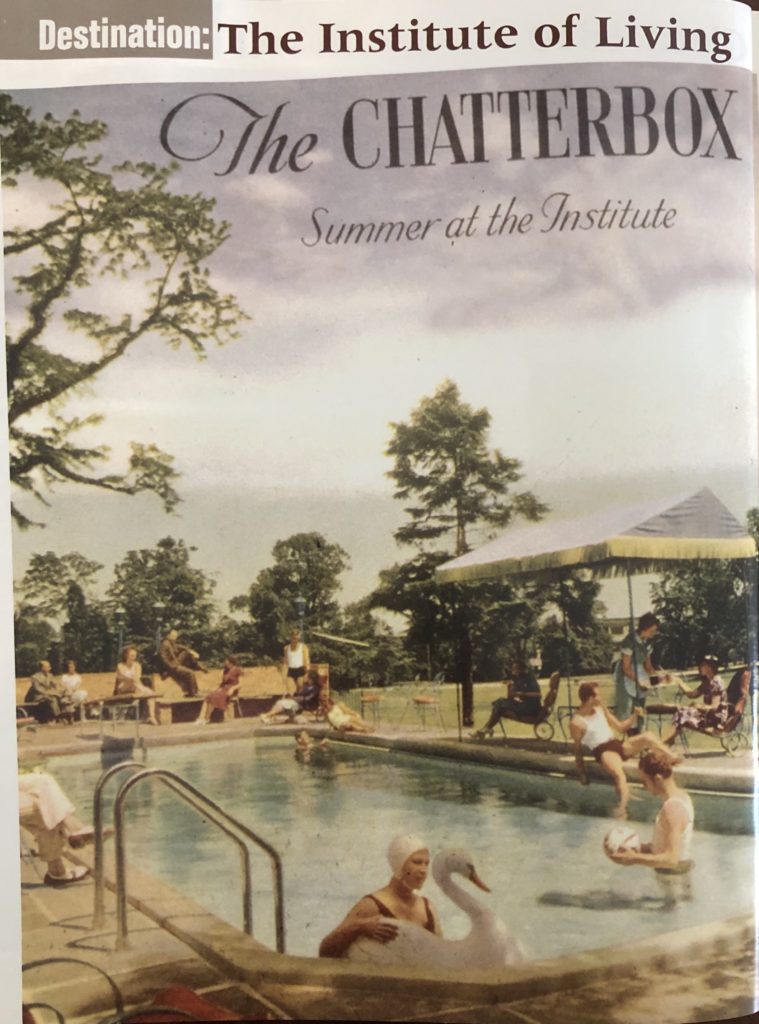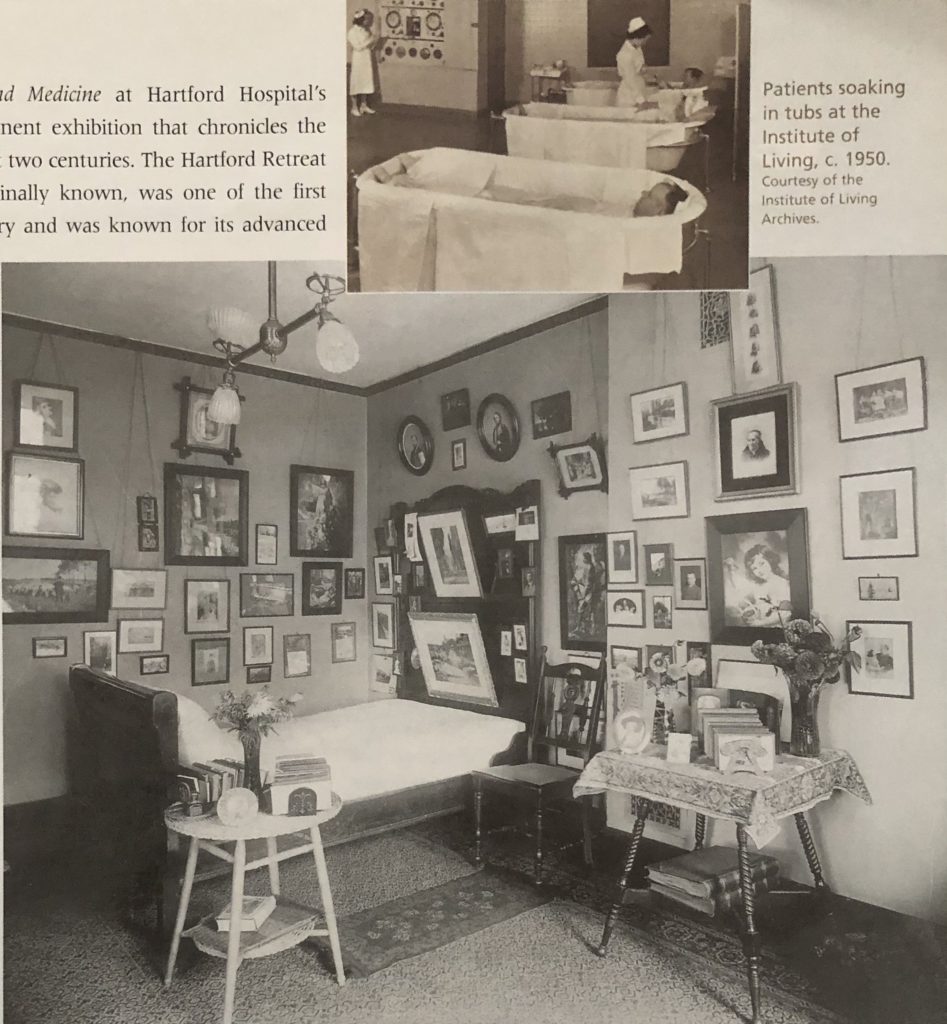
A cover of the Institute of Living’s newsletter for patients. Courtesy of the Institute of Living Archives
By Cynthia Cormier
(c) Connecticut Explored Inc. Feb/Mar/Apr 2004
Subscribe/Buy the Issue!
Myths, Minds and Medicine at Hartford Hospital’s Institute of Living is a fascinating permanent exhibition that chronicles the history of mental health care over the past two centuries. The Hartford Retreat for the Insane, as the institute was originally known, was one of the first mental health centers built in this country and was known for its advanced treatment of the mentally ill. As early as 1822 the retreat’s founders rejected the then-popular view that the mentally ill were hopeless, insensitive, and depraved. Instead they regarded them as people who deserved human treatment and whose conditions could improve in a calm and pastoral setting. In 1861, the retreat hired Frederick Law Olmstead to help create a park-like setting to encourage quiet reflection. By the 1940s the institute was promoting a country-club image of rest and relaxation for its clients that appealed to upper-class families.

top: Patients soaking in tubs, Institute of Living, c. 1950. bottom: A typical patient’s room at the Hartford Retreat for the Insane, as the Institute of Living was then called, c. 1910. Institute of Living
Myths, Minds and Medicine also chronicles the patient’s life. Admissions logs record afflictions that range from “suicidal melancholia” and “senile dementia” to “religious terror,” “disappointed affection,” “perplexity in business,” and ailments associated with “severe and long continued studies.” A re-creation of a patient’s room c. 1915, as well as sample menus, craft projects, and photographs of recreational activities offer a glimpse into daily life at the Institute. The exhibition notes that today, however, most clients live independently at home or elsewhere and are treated as outpatients. Many attend day programs and group therapy sessions.
Most disturbing is the section that details past treatments for the mentally ill. On display are 18th-century leg shackles and bloodletting lancets and a circa 1960 straightjacket; here, too, is acknowledged the most controversial treatment of the mid-20th century – the lobotomy. The exhibition ends with displays of the mapping of the brain and the efficacy of various psychotherapies, including drugs. A human brain is displayed in a specimen jar.
Cynthia Cormier was director of education and curatorial services at Hill-Stead Museum and chaired CT Explored‘s editorial board.
Explore!
Myths, Minds and Medicine is open to the public. Visit the Institute of Living’s website for information about access to the exhibition. For further information call 860-545-1010 or visit the Institute’s Web site at instituteofliving.org.
Read more stories about Health & Medicine in our Feb/Mar/Apr 2004 and Spring 2007 issues and on our Health & Medicine TOPICS page.
